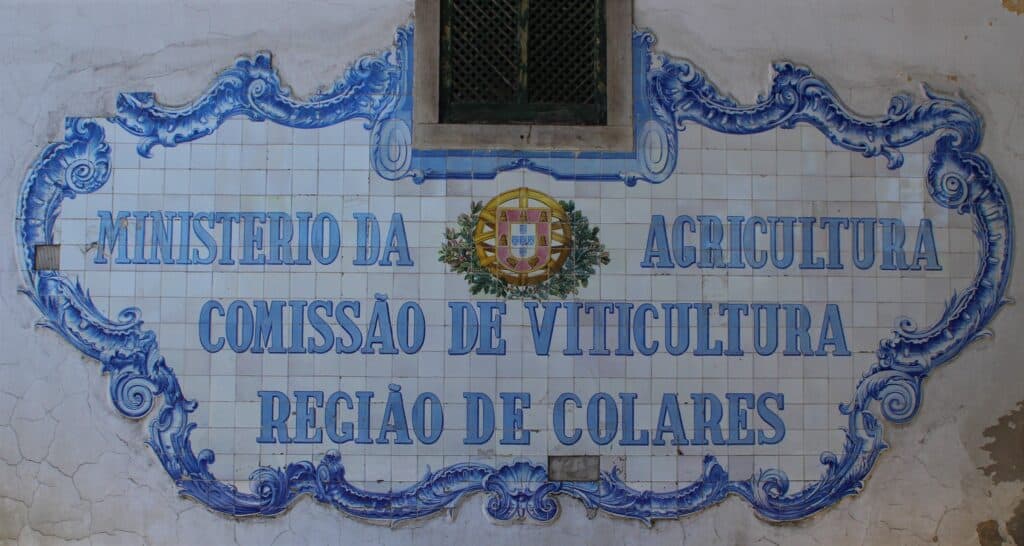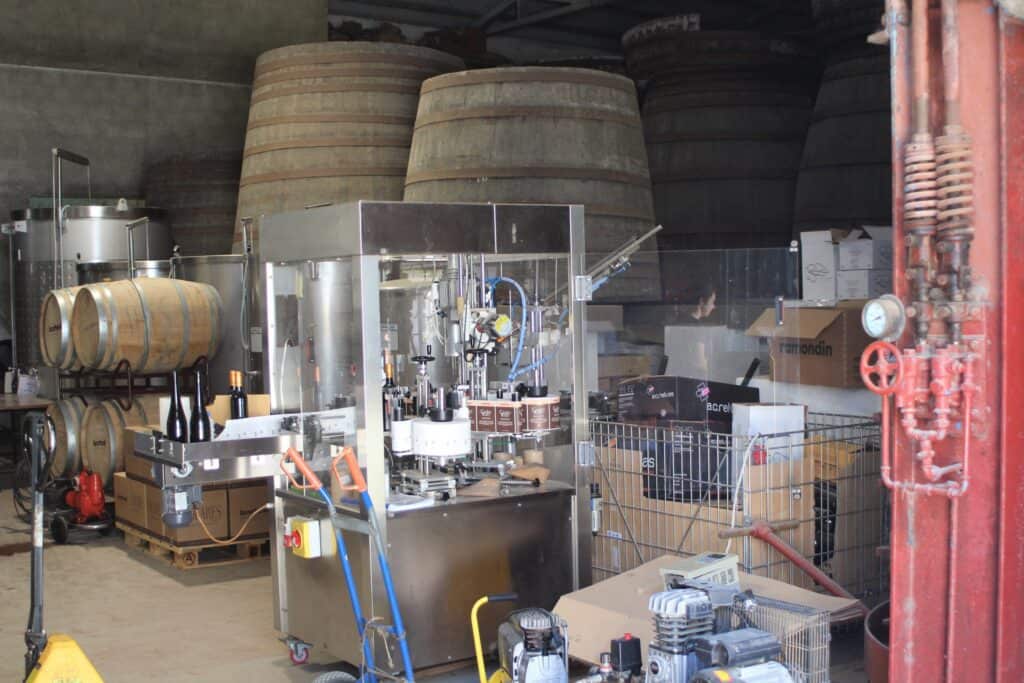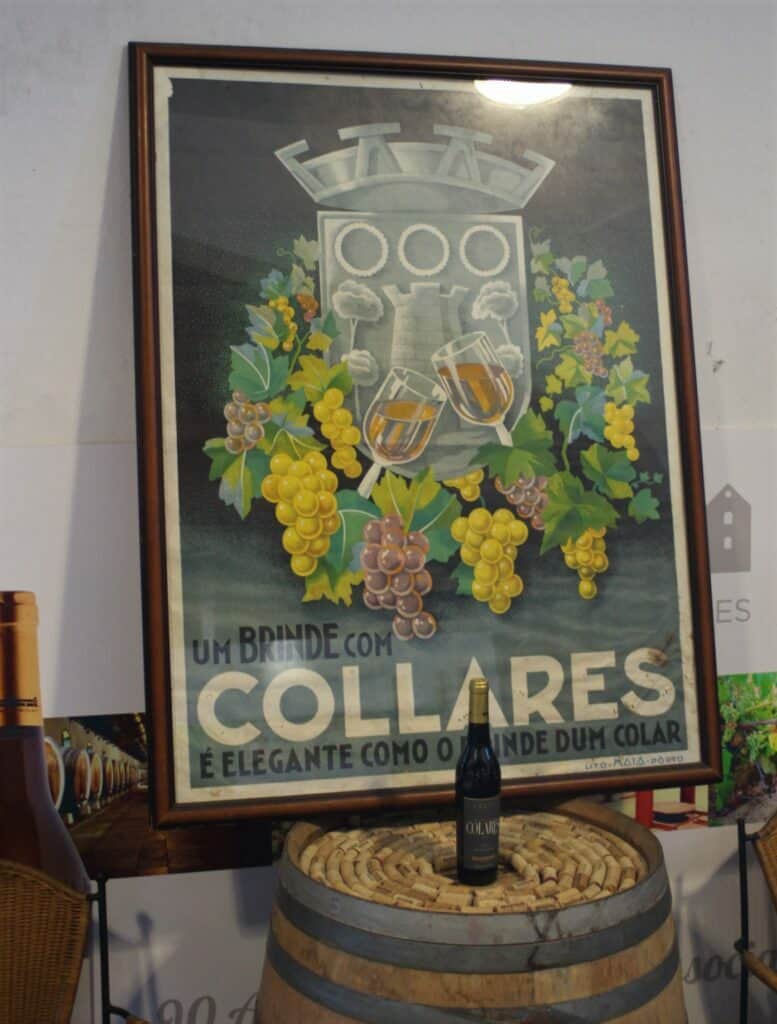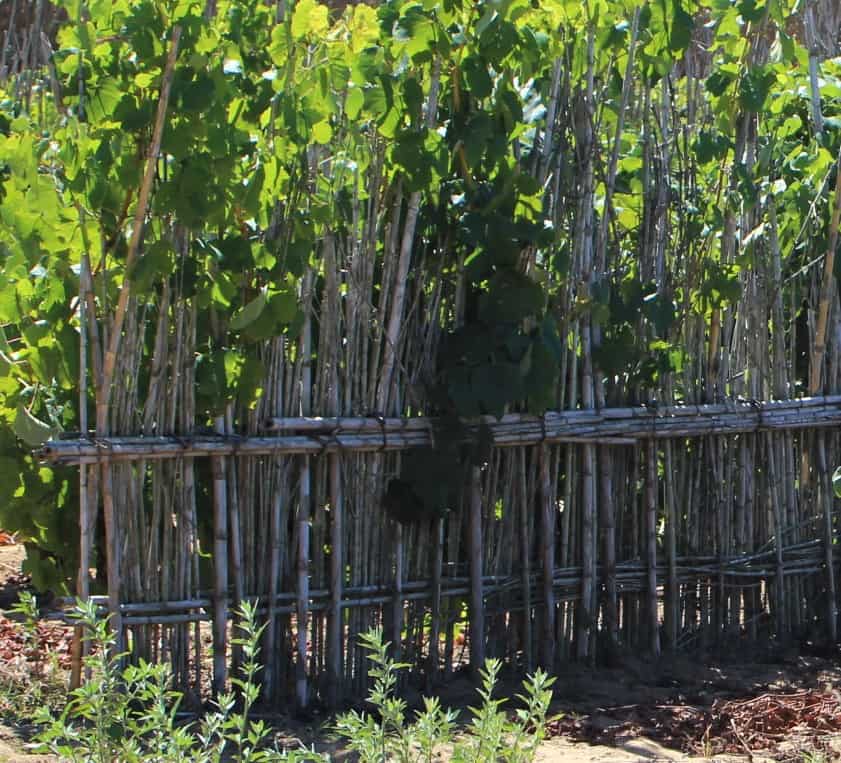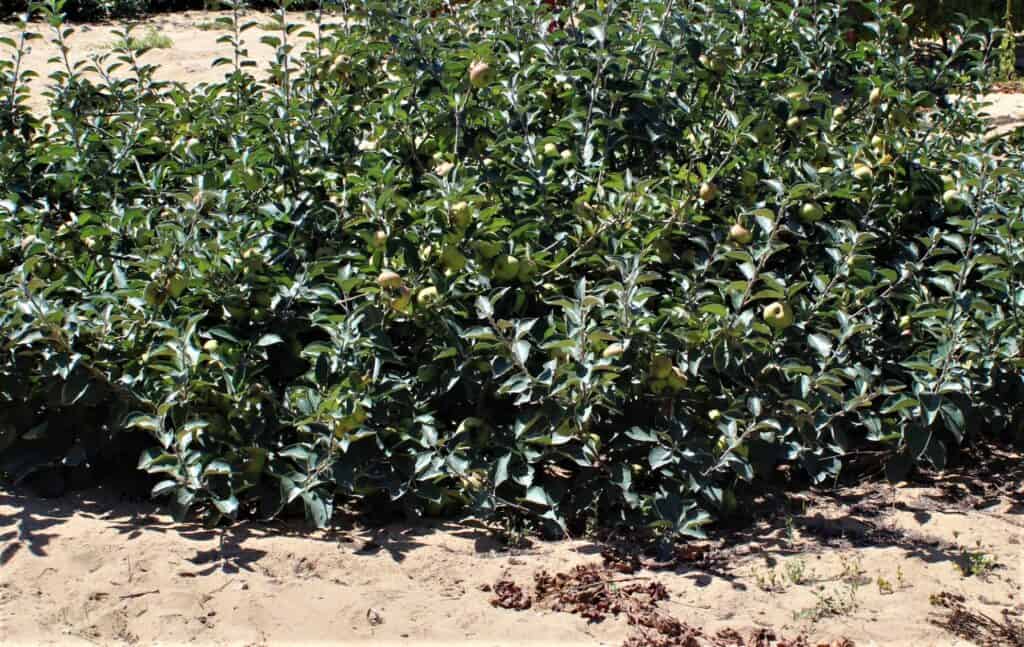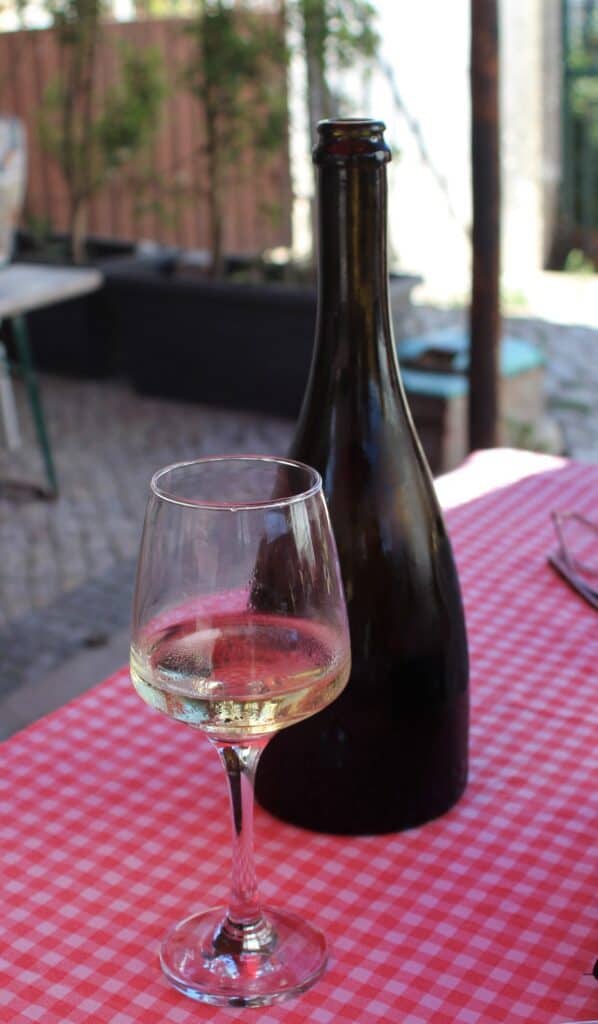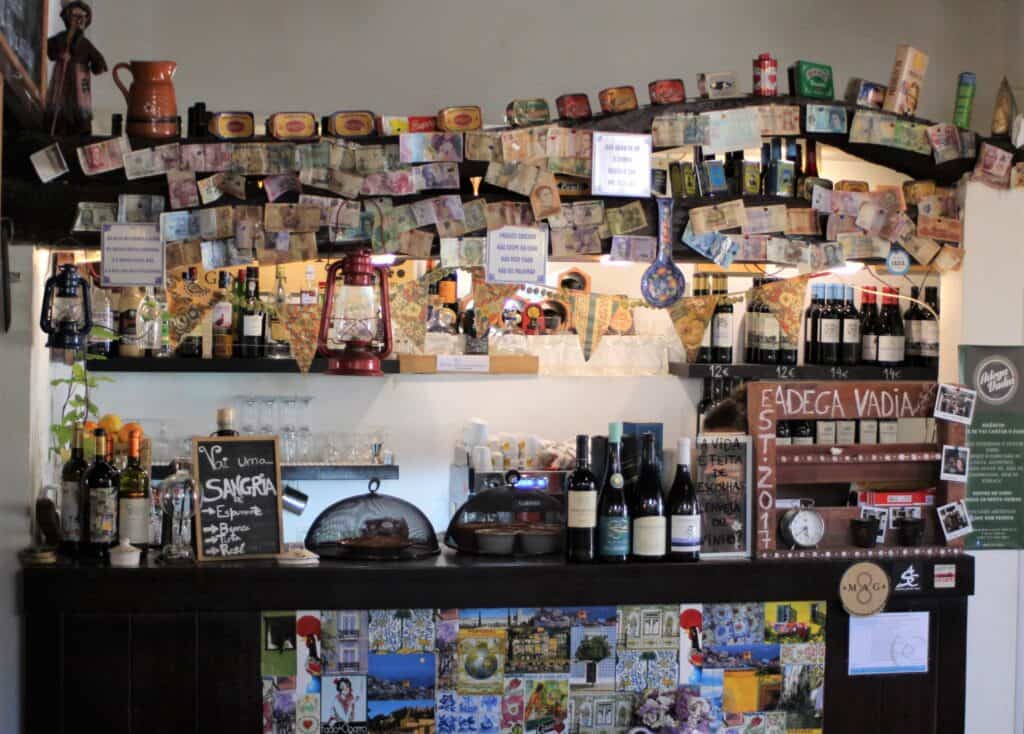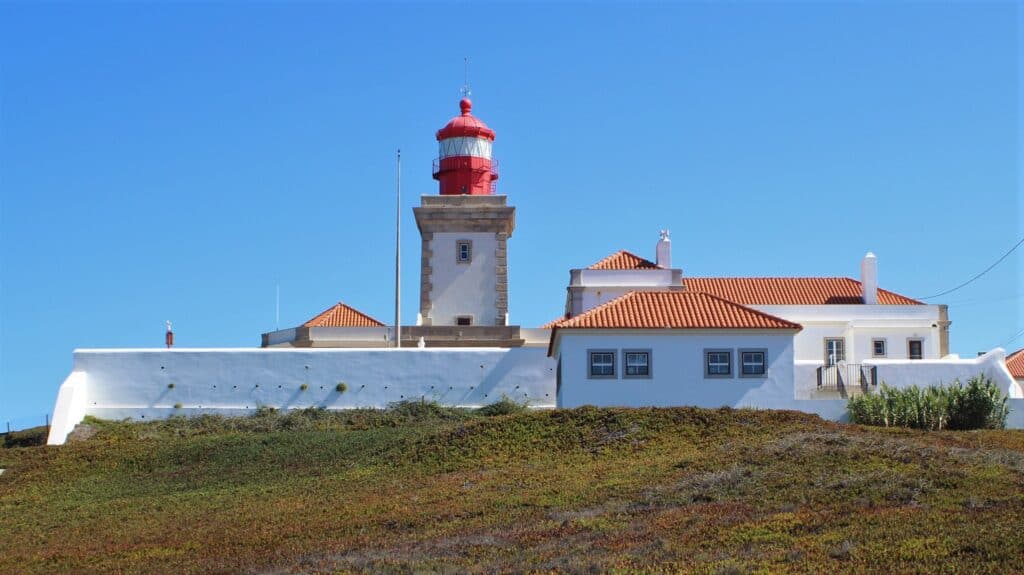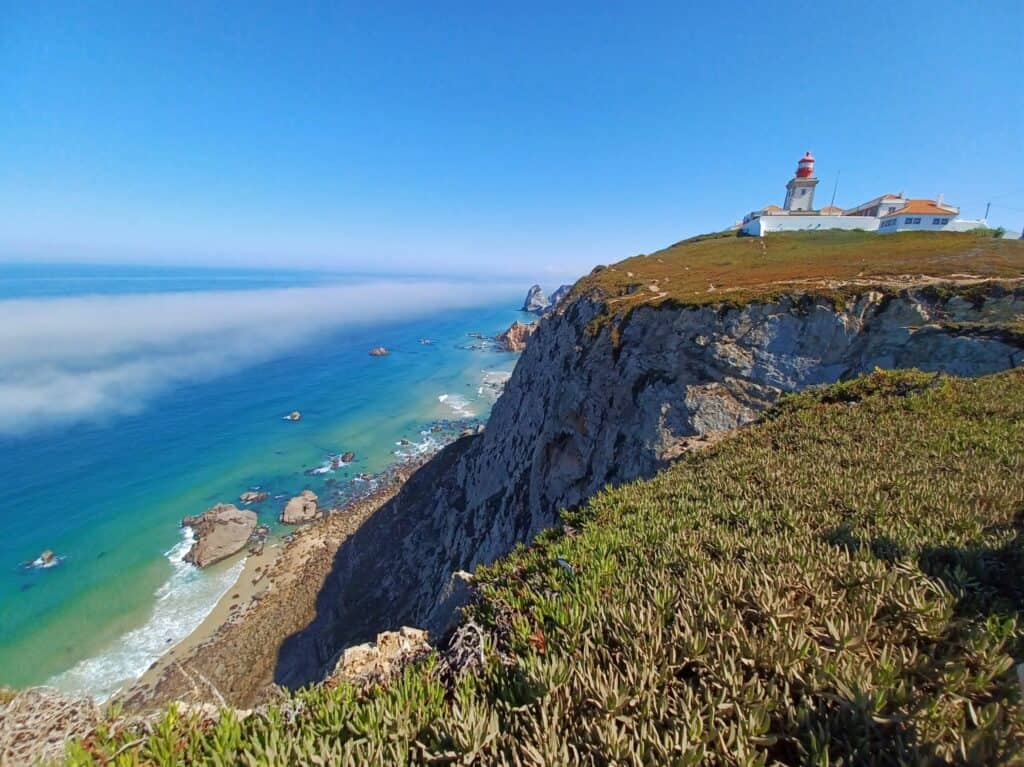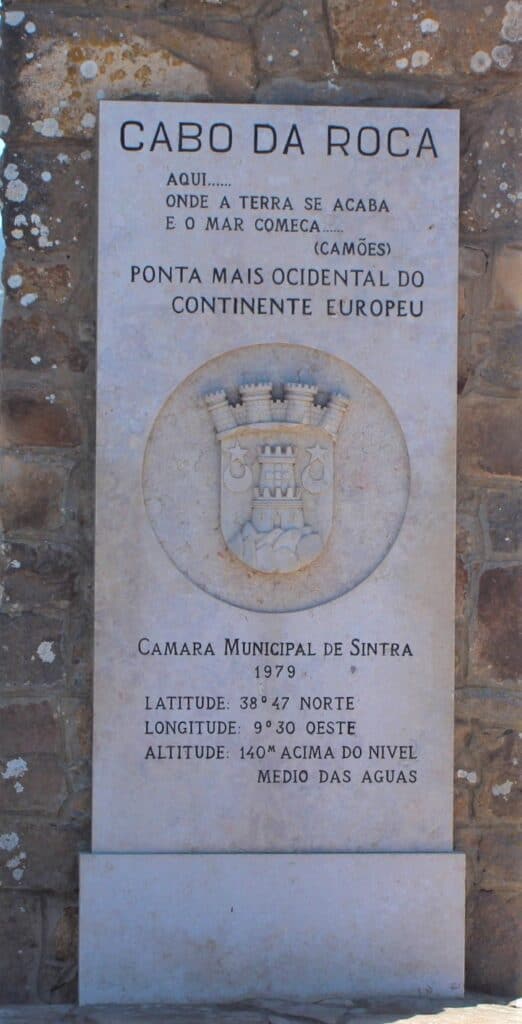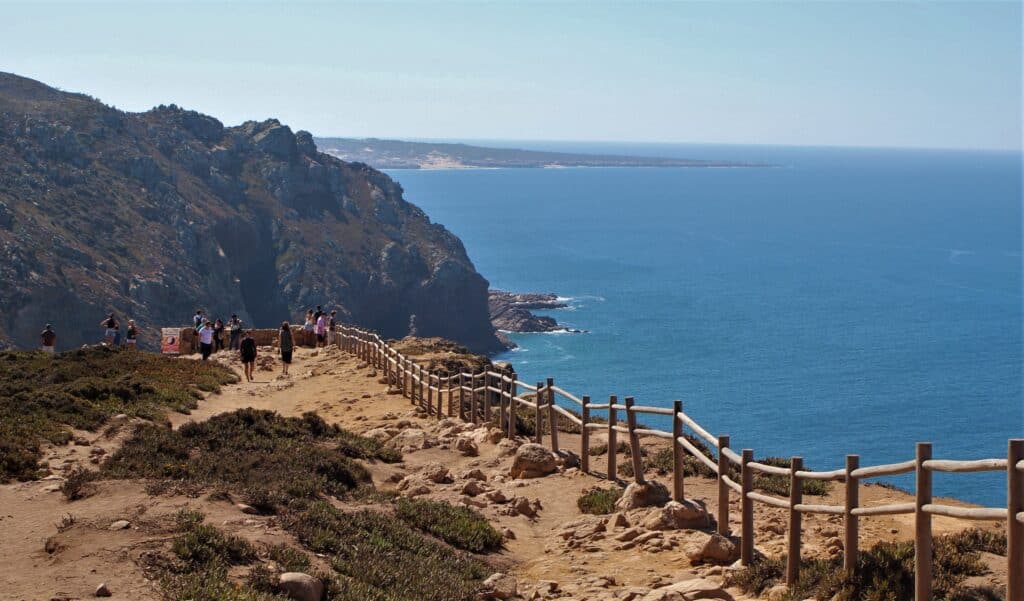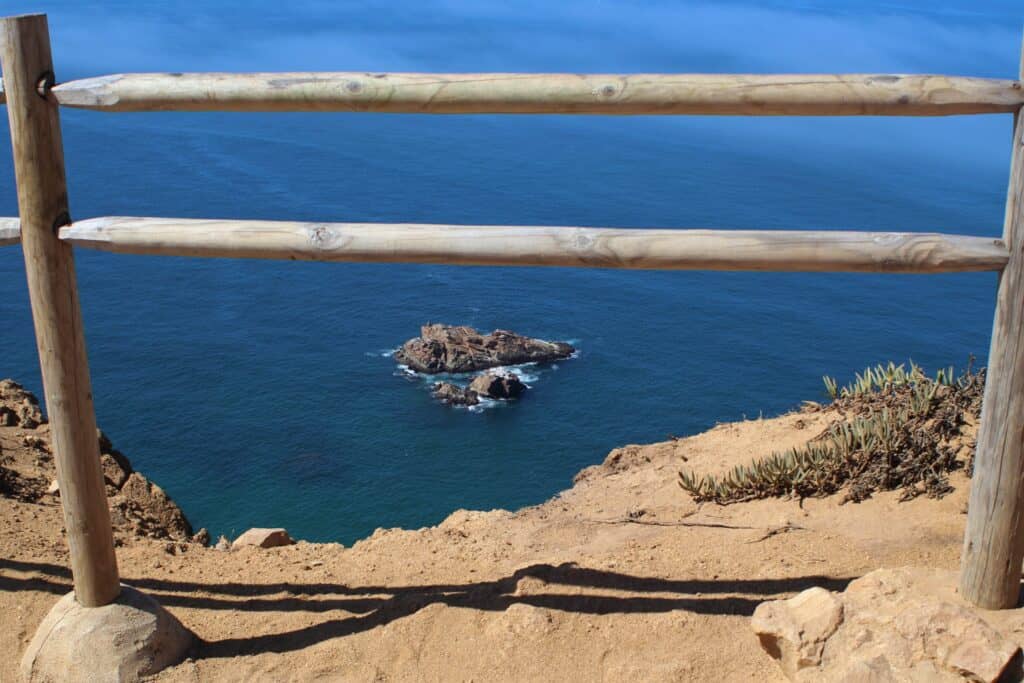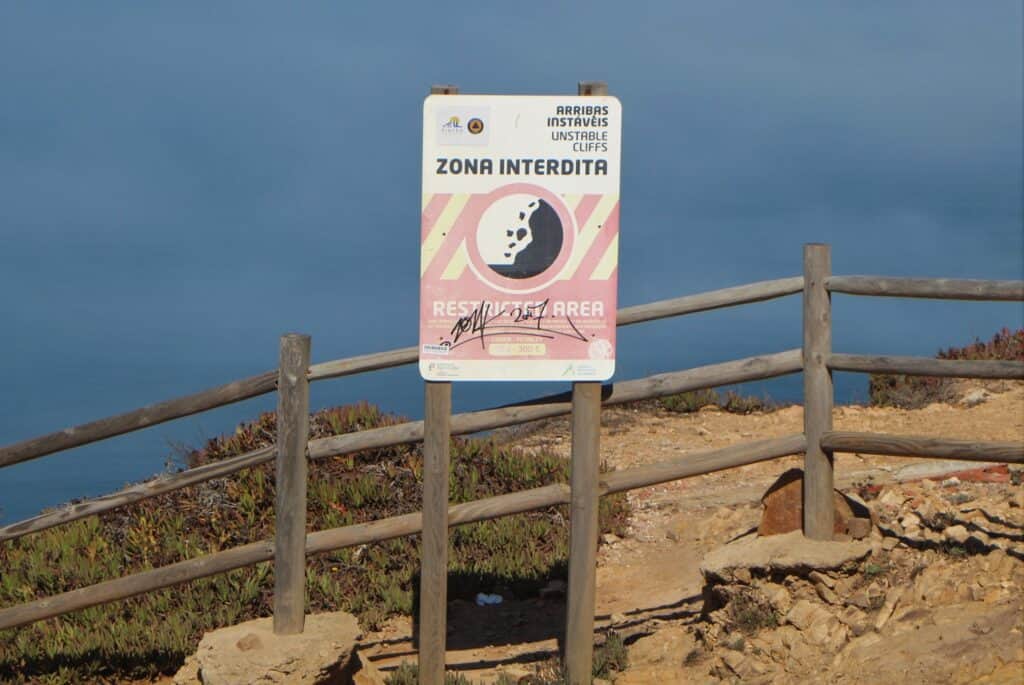Colares is the smallest and oldest wine region in all of Portugal. Wine grapes have been cultivated here for 800 years!
Colares wines

Colares is a town and parish, part of the greater Sintra municipality. Because of the area’s gorgeous coastline and beaches it has become very popular as a vacation spot and a place for second homes. As a result, much of the land that was used to grow grapes is now used for vacation homes.
But, that wasn’t always the case. As recently as the 1940’s, 2,500 acres of vines were under cultivation. Today, there are a mere 50 acres of vineyards.
That’s a shame because the vines in Colares are unique.
Firstly, the soil is sandy. And, by sandy I don’t mean the soil has a little sand mixed in. It’s sandy like the beach. It’s so sandy that the vines have to reach down 25 feet or more to get the water in the limestone bed beneath the sand.
This has made the vines some of the only ones in Europe to survive the phylloxera aphid plague that destroyed nearly all the vineyards in Europe in the 19th century. Today, almost all European grape vines consist of American root stock (which is immune to phylloxera) grafted onto European vines.
However, in Colares, the phylloxera aphid couldn’t survive in the sandy soil. So, here the old vines and rootstock remained intact.
Secondly, the vines in Colares are often not trellised. They are allowed to flop on ground and the grapes mature on the sand; literally laying on the beach! Apple trees are often planted as companions to the grape vines, perhaps adding a fruity component to the wine’s taste profile. This creates vineyards that are truly unlike anything you’ll see anywhere else.
You can find Colares wines on a few menus in Lisbon, but they’re not easy to find because of the tiny production in the region. Your best bet if you want to sample is to visit the Adega Regional de Colares (Regional de Colares Winery.)
Right in the middle of town, the Adega Regional de Colares is a co-op for the local grape growers. After harvest, farmers bring their grapes to the co-op where they are combined with other local Colares farmers’ grapes to create that year’s vintage. Only grapes grown in Colares and made at the Adega Regional de Colares can have the Colares DOC seal.
At the Adega Regional de Colares, you can see their small operation and taste some of the local wines.
I’m going to tell you, the wine (especially the white) tastes unlike anything you have ever had in your life. The white wine has such a strong minerality as to give it strong salty notes. Really salty, in fact. Some folks might find it off-putting. I’ll let you decide for yourself. For me, I’m glad I tried it, but I probably won’t be buying a case any time soon.
The red is full bodied and quite tannic. It also has some minerality, but certainly not nearly as pronounced as the white. I definitely prefer the red to the white.
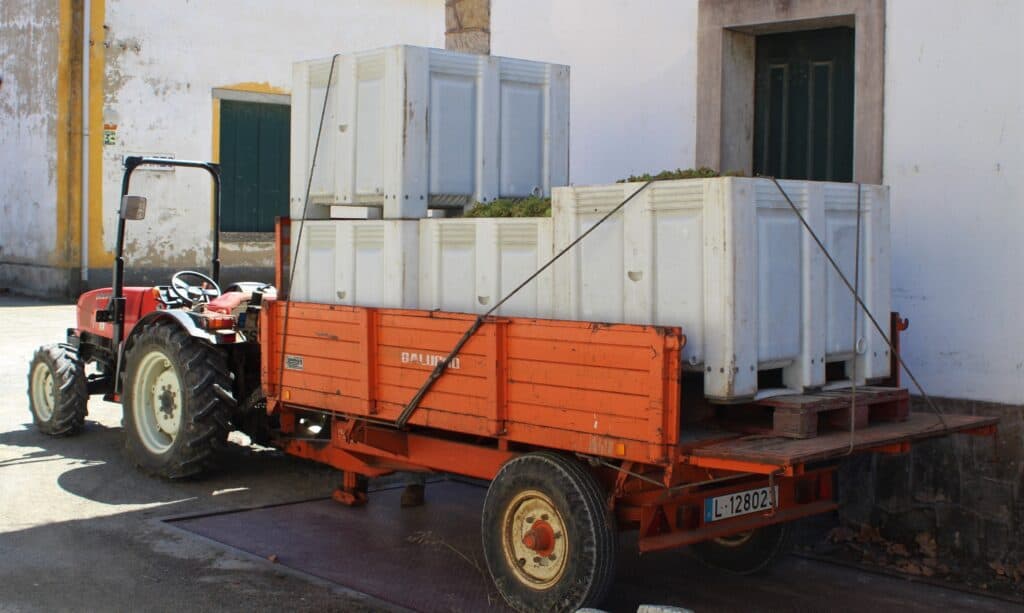
With only 50 acres under cultivation, the vineyards in Colares, as you can imagine, are tiny. Luckily, they’re not too hard to find. It’s quite a treat to see the vines sprawled on the sand with your own eyes. Then, right next to them are apple trees, also flopped on the beach.
From Adega Regional de Colares it’s about a 12-15 minute drive out of town to R. do Chão Verde where you can see several tiny vineyards surrounded by mortarless stone walls using the dried reeds lashed together as windbreaks. Like I said, it’s a unique scene you’ll not experience anywhere else.
Eating in Colares
My favorite spot to eat in Colares is Adega Vadia. The restaurant is a couple miles out of town in a little neighborhood near farms and the Sintra forest. It’s a real locals’ place with a great menu of homemade traditional Portuguese food. While these kinds of places are often fish and meat heavy, and you can certainly find plenty of that here, there are several vegetarian and vegan options including a lovely tomato rice dish, yummy Padron peppers, and a salad filled with seasonal veggies.
The house wine comes in an unlabeled bottle (score!) and is delicious. Plus, the atmosphere along with a delightful owner make this a great spot for lunch. Highly recommended.
A couple miles out of town is a cool vegan restaurant called Flores do Cabo. They combine a plant-based menu with an art gallery and studio.
Ribeirinha de Colares is a small restaurant, bakery, and gourmet store about a 5 minute walk from Adega Regional de Colares. The restaurant has several vegetarian options, though vegan dishes may be more difficult to come by. They also have Sintra’s famous pastry, the Travesseiro. If you like, pick up some Colares wine or olive oils, vinegars, and other gourmet products.
Azenhas do Mar
Some of the most breathtaking scenery in Portugal is at Azenhas do Mar, a seaside town that is part of the Colares parish.
A fair number of tourists go to Praia das Maçãs (Apple Beach). The beach got its name from the numerous nearby apple orchards that used to dot the landscape of Azenhas do Mar. The beach is wide, but often crowded in the summer. Surfers ride the waves near Praia das Maçãs.
My favorite place to hang out is the Praia de Azenhas do Mar. If you’re lucky, or if it’s offseason, you’ll find a parking spot at Miradouro das Azenhas do Mar (Azenhas do Mar Viewpoint). From there, you can take wonderous photos of the village and the whitewashed houses tumbling down to the ocean. It’s quite the striking view, but don’t stop there.
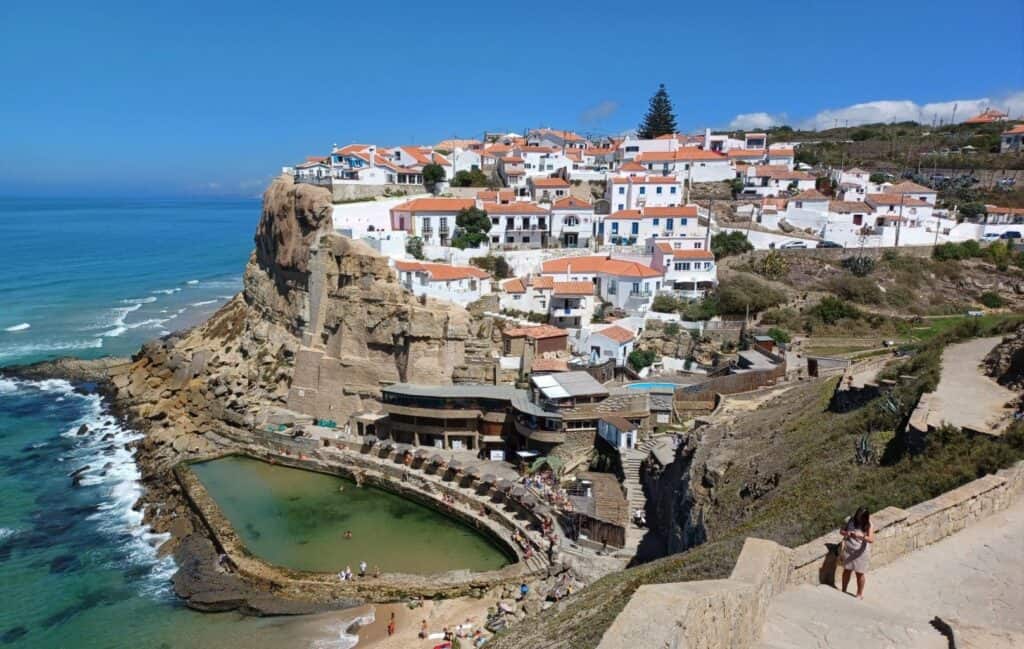
Walk down the staircase to Praia de Azenhas do Mar.
There’s a famous (and expensive) fish restaurant at the bottom of the stairs.
I keep going and head to the tiny beach that almost disappears during high tide. Here, there’s a tide pool protected by a sea wall that refills at high tide. Next to the pool is a snack bar where with a few tables. I like to grab a beer and watch the waves. Highly recommended.

Cabo da Roca
By far, the biggest tourist attraction in the Colares parish is Cabo da Roca, the westernmost point on continental Europe.
The first thing you’re likely to see as you round the bend and Cabo da Roca comes into view is the Farol do Cabo da Roca (Cabo da Roca Lighthouse). Beginning operation in 1772, the Cabo da Roca Lighthouse is the third oldest lighthouse on the Portuguese coast.
The lighthouse is still used for navigation and has 3 lighthouse keepers working on site. The light itself is only about 70 feet above ground level, but because of the massive cliffs, the lighthouse is actually over 500 feet above sea level. From this commanding position, the beacon can be seen up to 30 miles away.
As this is a working lighthouse, it is not open to the public. But, it’s easy to get great photos of the lighthouse from the Cabo da Roca grounds. On occasion, the lighthouse is open to tour. However, as of this writing, it is closed indefinitely due to renovation work.
The point itself is a rocky cape; part of the Sintra mountain range. Visitors love the dramatic scenery with cliffs plunging hundreds and hundreds of feet into the Atlantic Ocean below.
There’s a striking stone marker where people take selfies for Instagram. On the marker is a poem by the famous Portuguese poet Camões that says ““here…where the land ends and the sea begins…” You’ll also see the longitude and latitude coordinates of Cabo da Roca. If you want a souvenir of your trip, head to the nearby tourist office and get a certificate with you name on it showing that you have been to the westernmost point in continental Europe.
From there, you can walk down a short trail for more spectacular scenery.
There are tiny beaches along the coast, but remember, you have to go down, down, down to get to them.
The Praia da Ursa is gorgeous. You can take a trail near Cabo da Roca to get there, a hiking trail with over 300 feet of elevation change. Good shoes are a requirement.
Also, Praia da Ursa is a tiny beach with no facilities or lifeguards. The water is cold and the currents are very, very strong. Swimming is strongly discouraged. Finally, Praia da Ursa, because of its remoteness, is an unofficial nude beach. If that sort of thing bothers you, maybe find another place.
Getting to Colares
I always advocate for public transportation when traveling. But, some of the areas of Colares are a bit remote. They are serviced by buses, but you might be waiting a while for the next one to come. In this case, a car might be a good idea.
Colares is about a half hour drive from Lisbon.
Getting to Colares by public transport requires taking the train from Lisbon to Sintra and then transferring to the 403 bus. When you get to Colares, it’s a short walk to the Regional de Colares Winery.
The 403 also continues to Cabo da Roca. From Colares it’s about another 15 minutes to Cabo da Roca.
From Colares to Azenhas do Mar it’s about an hour walk or a 10 minute car ride. You can also take the 441 bus from Colares (about 20-25 minute ride).
The 403 also stops near Adega Vadia.
About the Author

Brent Petersen is the Editor-in-Chief of Destination Eat Drink. He currently resides in Setubal, Portugal. Brent has written the novel “Truffle Hunt” (Eckhartz Press) and the short story collection “That Bird.” He’s also written dozens of foodie travel guides to cities around the world on Destination Eat Drink, including in-depth eating and drinking guides to Lisbon, Porto, Sintra, Monsaraz, and Evora in Portugal. Brent’s podcast, also called Destination Eat Drink, is available on all major podcasting platforms and is distributed by the Radio Misfits Podcast Network.

